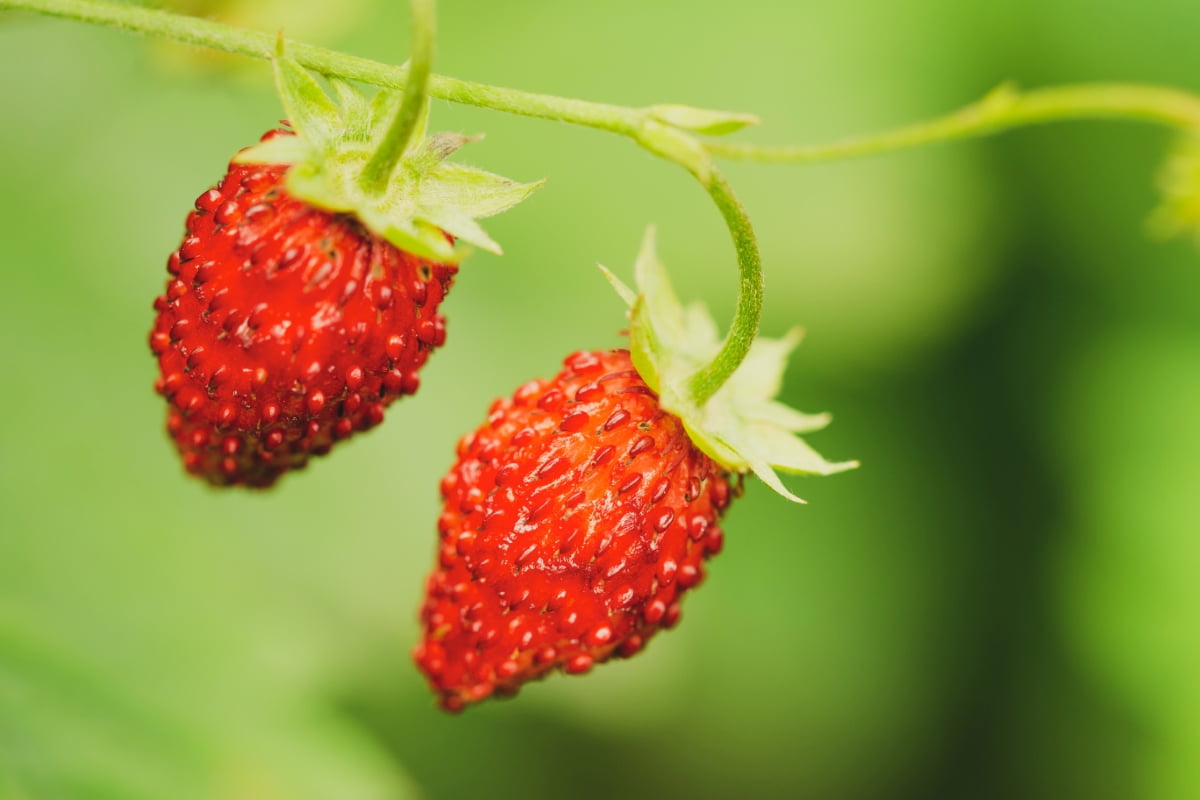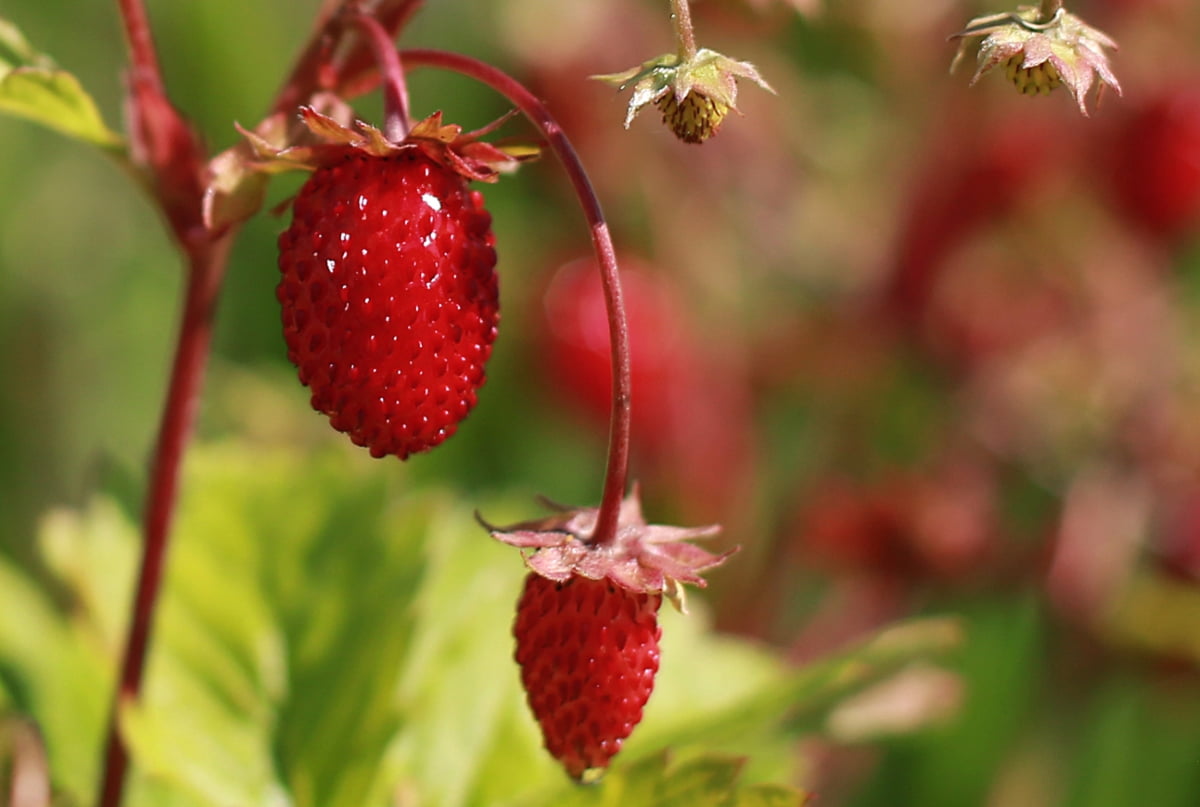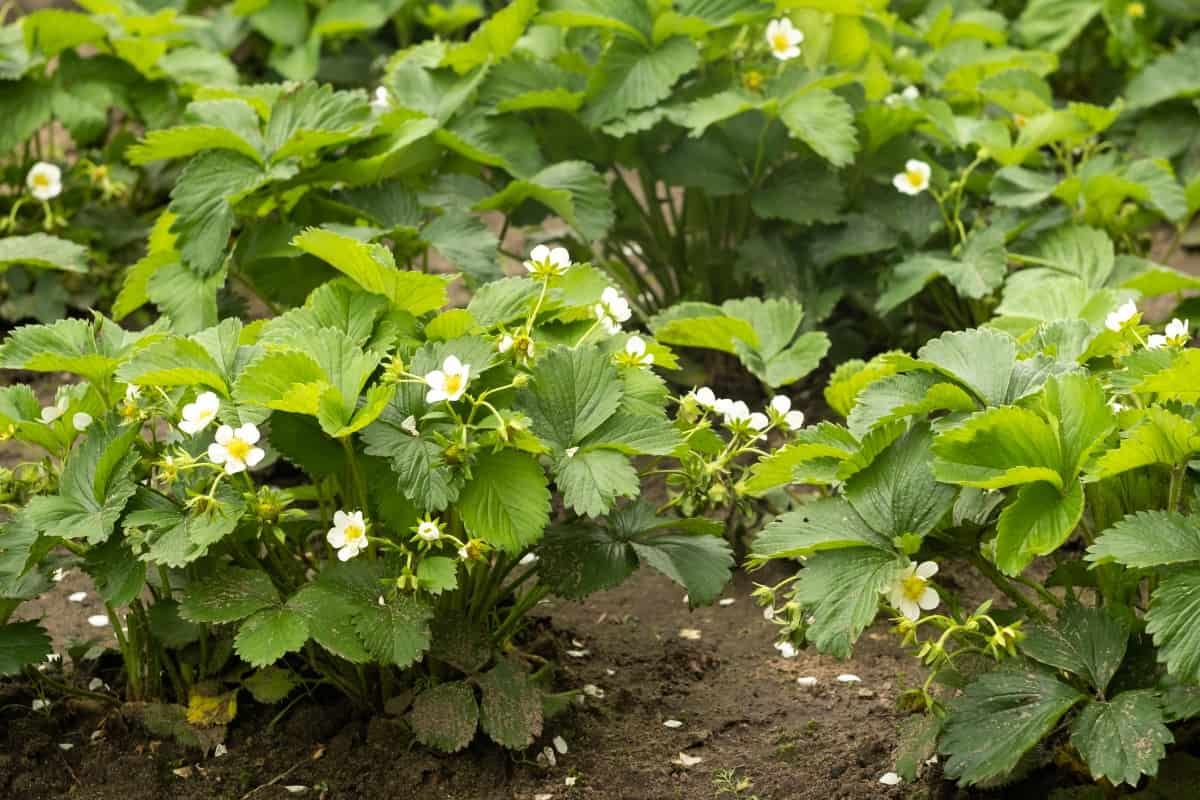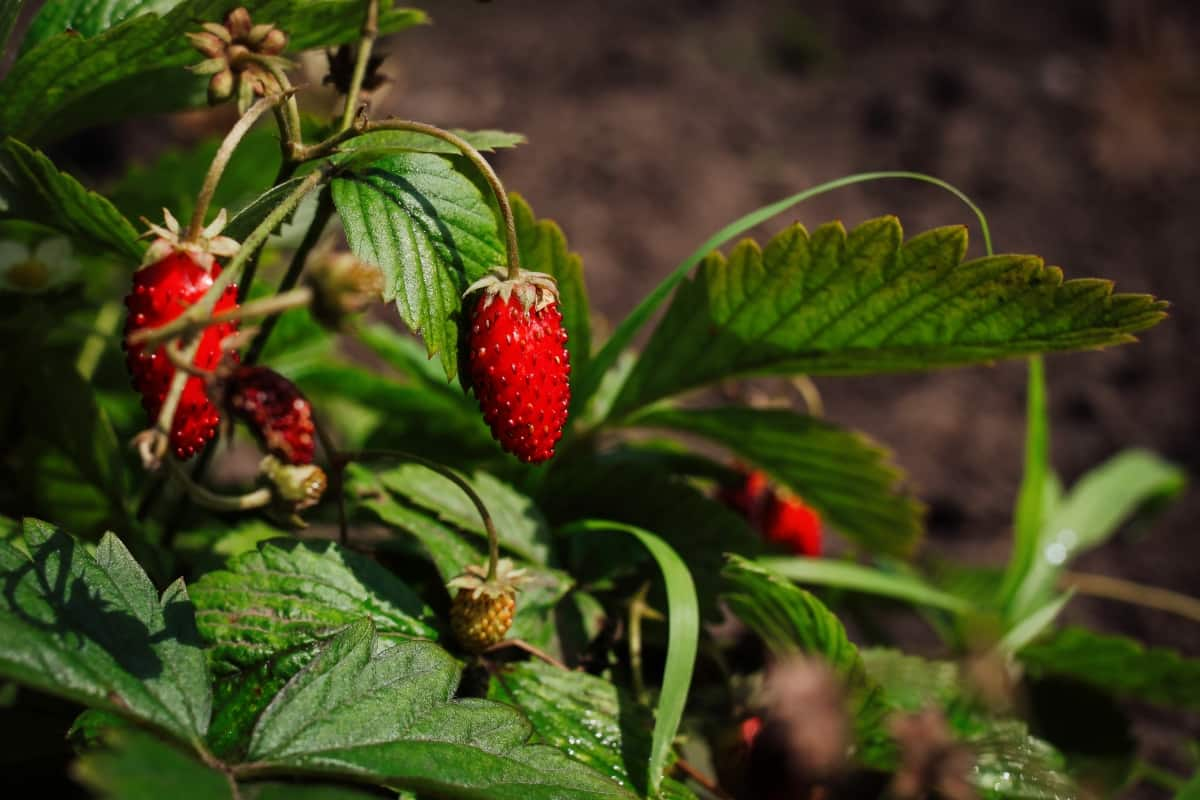Wild strawberries are small, flavorful berries easily grown in your garden. These strawberries are different from the common garden strawberries as they are smaller and have a more intense flavor. If you want to grow wild or Wild strawberries, this planting-to-harvest guide will provide all the necessary information.

How to Grow Wild/Alpine Strawberry
How to Grow Wild Strawberry Plants from Seeds in Pots
- Start by selecting high-quality wild strawberry seeds. These can be purchased from reputable nurseries or seed suppliers.
- Fill a seedling tray or pots with well-draining potting soil, leaving about half an inch of space at the top.
- Sow the wild strawberry seeds evenly on the soil’s surface, gently pressing them down with your fingertips. Lightly sprinkle a thin layer of potting soil over the seeds to cover them.
- Moisten the soil gently using a watering can or spray bottle.
- Keep the seed trays in a warm location with indirect sunlight or under grow lights.
- After about 3-4 weeks, the wild strawberry seedlings will start to emerge. At this stage, remove the plastic wrap or propagator.
- Provide the seedlings with adequate sunlight or artificial grow lights for 12-16 hours daily.
- As a final step in how to grow wild strawberries in pots, once the seedlings have developed their second set of true leaves, transplanting wild strawberries into individual pots.
Propagating Wild Strawberry Plants Through Division
New clumps of wild strawberry is propagated by lifting, dividing, and replanting existing plant sections. Vegetative propagation in strawberry occurs through dividing plants is a simple one. To divide an existing clump of Wild strawberries, you need to dig up a section containing many individual plants. Gently pull apart the plants, or you can cut with a sharp knife if required, and you should be able to get many individual plants from one clump. Plant these directly into the backyard or pot them up to grow them on.
Best Soil Conditions for Growing Wild Strawberries
Where do wild strawberries grow? They grow along roadsides, on the banks of creeks and streams, in woods, and along fence lines. Wild strawberries need fertile and well-drained soil. Mix compost or well-composted manure into the soil before planting the strawberries. Add compost as mulch for the established plants during the growing season.
In case you missed it: 8 Common Problems with Garden-Grown Strawberries: How to Overcome Them

Like all strawberry plants, wild strawberries must also grow on pH 6.0 to 6.5 in acidic soil. To ensure the soil is suitable for growing strawberries, add as much compost as possible and test the pH level with the pH tester kit.
Tips for Planting Wild Strawberry Runners
- Wild strawberries prefer a sunny location with well-drained soil. Before planting the runners, prepare the soil by removing any weeds, rocks, or debris.
- Applying an organic mulch layer around the runners can help retain moisture, control weeds, and regulate soil temperature.
- Gently separate the runners from the parent plant using clean and sharp garden shears. Aim to choose healthy and vigorous runners with well-developed roots. Avoid using runners that appear weak or diseased.
- Place the runner in the hole, ensuring the roots are evenly spread. Fill the hole with soil, gently firming it around the runner. It is crucial to avoid burying the runner’s crown, which can cause rotting.
- Fertilize the plants with a slow-release balanced fertilizer once established. Prune any damaged or overgrown foliage to promote airflow and prevent diseases.
Pruning Techniques for Wild Strawberry Plants
Crown Pruning: It involves removing dead or diseased foliage from the plant’s crown. By doing so, the potential sources of infection can be eliminated, and promote the growth of new, healthy leaves. Pruning strawberry plants in spring before the new growth begins.
Runner Pruning: While runners help with plant propagation, they can also lead to overcrowding and reduced fruit production if left unchecked. Prune the runners by cutting them back to the desired length to prevent this. This helps maintain a more compact and manageable plant.
Leaf Pruning: This involves selectively removing some of the older, larger leaves to allow better airflow and sunlight penetration to the center of the plant. By doing so, we can reduce the risk of diseases and promote better fruit development.
Protecting Wild Strawberries from Pests and Diseases
Wild strawberries are vulnerable to the same insect pests that damage cultivars. These include slugs, thrips, borers, caterpillars, and plant bugs. Organic preventives like diatomaceous earth, biological sprays, and commercial products help deter insect pests. As homemade bug spray for strawberry plants, use a homemade spray made from garlic or hot pepper mixed with water to spray plants. To protect wild strawberry plants from pests, you can also use neem oil or a citrus-based insecticidal oil to prevent infestations.
Disease resistance is better for wild strawberries, but they can develop strawberry leaf spots. Small reddish-purple spots appear on leaves and as sunken dark spots on fruits. Provide good air circulation in the strawberry patch and remove weeds and dead or diseased leaves. In severe cases, apply a fungicide. Choose the least toxic method when treating the plants while they bear fruit.
In case you missed it: How to Plant Strawberry Seeds Outdoors: Growing, Care, and Harvest

Watering Requirements for Wild Strawberry Plants
It is necessary to water the soil moderately when growing wild strawberries. This means preventing puddles from forming on the surface without allowing them to dry out. The roots of wild strawberries and regular strawberries are shallow, so it’s best to water lightly and often rather than infrequently and heavily.
Watering your wild strawberry plants at the soil level is one of the best things you can do to keep them healthy. Doing this will prevent the growth of bacteria, fungi, mold, and insects. The best way to water those short leaves is with soaker hoses (you can also use them to water other plants).
Growing Wild Strawberries in Containers or Hanging Baskets
To grow strawberries in hanging baskets, wild strawberries should be planted in pots using the same methods as planting in the ground. Wild strawberries can grow in pots for many years if maintained properly. As a clump-forming perennial, strawberry hanging basket runners must be thinned in late autumn to avoid overcrowding. The other option is to increase the pot size. To report, choose a large container to accommodate the number of plants you want to grow.
Harvesting and Storing Wild Strawberries
In most cases, strawberries turn red when ripe (except cream strawberries, of course). Your fingernail will be about the size of a woodland strawberry. You should harvest the fruits when they are completely ripe but not overripe. When wild berries age, they turn dark red and become mushier in texture, which loosens their seeds. Stay on top of harvesting decaying fruits to avoid attracting pests and diseases.
In case you missed it: How to Grow Strawberries in Greenhouse: A Step-By-Step Guide for Seed to Harvest

Conclusion
Following these planting-to-harvest guidelines, you can successfully grow and enjoy a bountiful harvest of wild strawberries. Wild strawberries are a delicious addition to any garden with their delightful taste and easy cultivation. Happy growing and harvesting!
- Feed Your Flock for Less: Top 10 Tips to Save on Chicken Feed
- Ultimate Guide to Ossabaw Island Hog: Breeding, Raising, Diet, and Care
- Hatching Answers: The Top 10 Reasons Your Chickens Aren’t Laying Eggs
- Eggs and Economics: Breaking Down the Cost of Raising Backyard Chickens
- Defend Your Greens: Proven Methods to Keep Iguanas Out of Your Garden
- Ultimate Guide to Cinnamon Queen Chicken: A Comprehensive Guide for Beginners
- Ultimate Guide to California Tan Chicken: Breeding, Raising, Diet, Egg-Production and Care
- Ultimate Guide to Marsh Daisy Chicken: Breeding, Raising, Diet, and Care
- 10 Types of Chicken Farming Businesses You Can Start for Profits